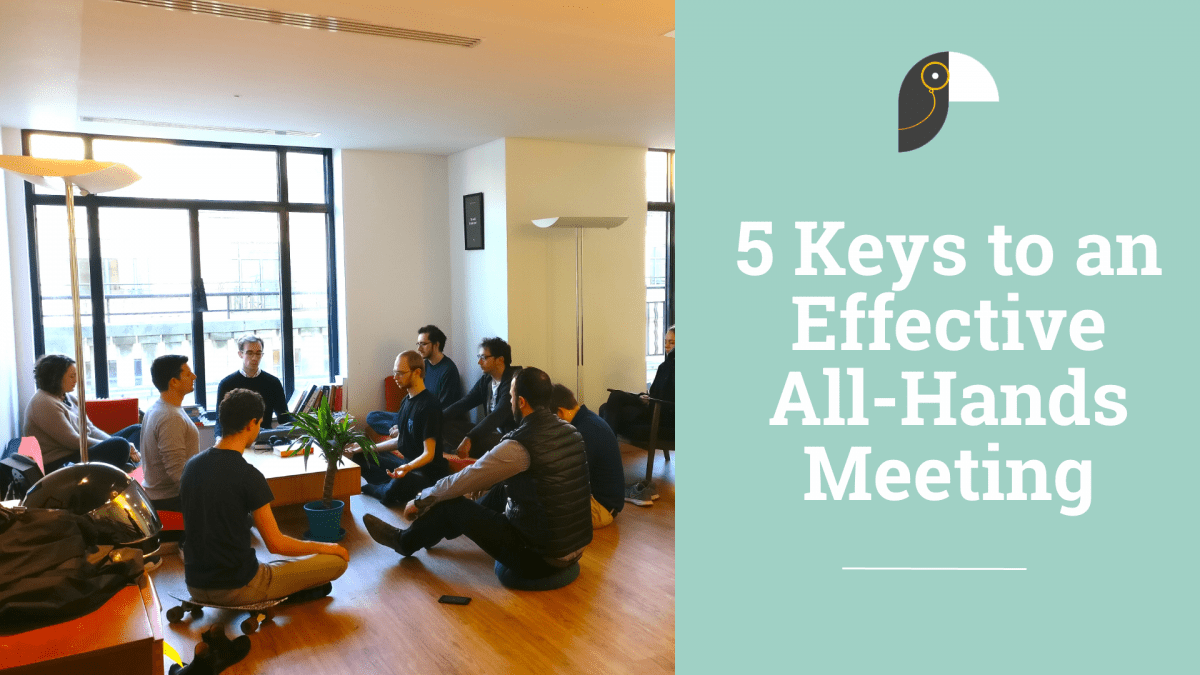
“I’ve got a great idea — let’s hold another meeting!”
If those words give you a sinking feeling, you aren’t alone. Executives now spend an average of 23 hours a week in meetings, up from just 10 hours a week in the 1960s. Studies show that poorly run meetings — which, let’s face it, is most of them — are linked to lower rates of innovation, lower market share, and increased employee turnover.
Still, not all meetings are bad. When it comes to keeping your teams aligned and motivated during these crazy times, there can be real value to getting everyone together for regular all-hands meetings. Done right, a monthly meeting with everyone participating can be a powerful tool for keeping people pulling in the same direction.
The trick is to make sure you’re keeping your all-hands meetings focused and engaging for everyone involved. It’s all too easy for such meetings to turn into opportunities for bragging and back-slapping, or to go on far too long as different teams vie for extra time to blow their own trumpets.
Here are 5 ways to keep your all-hands meetings on track:
- Have a one-deck rule. Run your meeting from a single unified slideshow, prepared in advance, to ensure that you don’t waste everyone’s time as people fuss around loading up their individual decks. Added bonus: with a unified deck, people can’t sneak in extra slides or surprise you with an unplanned change in direction.
- Watch the clock. Give every team the same amount of time to speak, and keep it short: 4 minutes is plenty, and forces people to focus on the stuff that really matters. Make sure each team designates a single speaker to minimize pointless back-slapping.
- Have a regular schedule. Use the same time and location for your meetings to avoid potential confusion. This is useful even during the era of remote work: use a single unique Zoom or Google Meet link for your meeting, so that people are never confused about where they’re supposed to be.
- Deputize people. Task specific people with handling the various logistical jobs that need doing, from getting AV systems in place to sending reminders or tracking time for speakers. When people have a single fixed job, there will be less confusion about who’s doing what, and things will go more smoothly for everyone.
- Focus on specifics. Ask speakers to focus on communicating specific actions, achievements, and learnings rather than simply listing their team’s responsibilities. If you’re doing this regularly, people should know each other’s roles, so the aim is to communicate only what’s new and relevant.
Done right, all-hands meetings help bring an end to chaos and keep everyone focused, but only if you keep things interesting, fast-moving, and well-organized. Putting a few clear rules in place early on can help you to keep things on track — and by keeping everyone on the same page, these efficient and streamlined events can even reduce the need for smaller meetings between individual teams. Now that really is a great idea!


